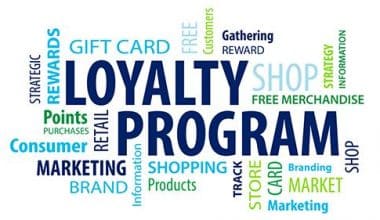Most of the time, when we want to improve our relationships with customers, we think about service and support instead of customer engagement. But this is more than just good customer service. It’s not enough to make customers happy and try to get them to spend more money with your brand. In fact, this may make them feel transactional and less important to your business. Instead, you should make the customer’s experience better to make them more loyal to your brand. In this blog post, we will discuss everything you need to know about customer engagement, including the strategy, platform, solution, and why it is important.
Customer Engagement
Customer engagement is the ongoing process of building a relationship with a customer that goes beyond the transaction. It’s a planned, consistent way for a company to give customers value at every interaction, which makes them more loyal.
Customer engagement is often confused with customer satisfaction and experience. There are some similarities between the three, but they are still different. You must realize that “customer experience” refers to the impression that customers have of your business based on everything they see, hear, or learn about it. We’ll go into much more detail about these ideas later.
Customer Engagement Is a Step Beyond Customer Satisfaction
Customer satisfaction, on the other hand, measures how much customers enjoy or detest your goods or services. Both are important when interacting with customers, but listening is important to build a relationship and offer a custom solution. Listening well is a very important skill that affects the whole customer experience. The better a sales representative can listen, the more they can customize a solution to fit the customer’s job, problems, and goals.
Strategy for Customer Engagement
Your strategy for customer engagement should be an all-in-one solution that fits with what your customers want. Consider their needs at all times: What do they value? What are some of the prevalent issues they have? Create a customer-centric strategy that adds value to your customers and encourages them to interact with you more. There are some tried-and-true methods to get you started, based on your sales team, customer base, and product or service:
#1. Share Your Company’s Story, Mission, and Vision
This strategy for customer engagement involves sharing your business story, Stories are easy to remember and understand. They give people a reason to trust your business. Make your brand more relatable by telling people about your mission, vision, and story. Help your customers understand what your business is all about. Make sure to include your customers in your story and give them a starring role: take the chance to relate, listen to their goals and problems, and ultimately establish a common vision.
#2. Practice Active Listening
Customers make it clear what they want, so pay attention. What are people saying about your business, and what are they not saying? How do they judge you compared to your rivals? Let customers easily submit comments, discuss their experiences, record responses, and follow up. Follow-ups at the right time show your audience that you heard what they said and are committed to making the customer experience better. When you get bad feedback, make sure to listen and try to solve the problem, not just calm the customer down.
#3. Collaborate to Define and Mutually Agree on a Plan that Works
This strategy for customer engagement should be a team effort that includes feedback from both customers and sellers. A mutual action plan (MAP) assists both parties in identifying the resources, milestones, and other information required to meet the needs of the customer. Customers can trust you to give them exactly what they require, removing the guesswork and making the process of completing agreements faster and easier.
#4. Provide Free Benefits to Users
Reward people for their loyalty by providing something for free not ink pens or water bottles, but items your clients genuinely require. Offer them free advice on how to use your product to its fullest potential or a link to a cost-benefit analysis site. Free benefits are another way to get people to buy from you. Give potential customers a taste of what you have to offer without giving everything away. If your customers are new business owners, you could offer them a free webinar on planning and resource management. If they work in the manufacturing industry, you could give them a white paper on the new rules for their industry.
#5. Take a Social Approach
Sites like Twitter, Facebook, and Instagram have become popular places for people to express their dissatisfaction with a company’s gratitude. In any case, these tools provide you with direct access to your customers’ raw thoughts and feelings. Respond to comments, share user content, show support for a cause, and provide useful resources to get to know your customers better.
Customer Engagement Platform
A key piece of software known as a “customer engagement platform” controls, analyzes, and facilitates interactions with prospects and customers. It works with customer engagement technologies such as email, direct messaging, chatbots, and others.
Using the four factors above, we’ve found some popular platforms. Startups, SMBs, and enterprises in retail, food and beverage, financial services, media, telecommunications, healthcare, and other industries use them. This is not a full list, but it does represent some of the most common and adaptable alternatives.
#1. Twilio Engage
Twilio Engage collects data from places like apps, websites, and CRMs. It also has tools for advertising, analytics, email marketing, feature flagging, A/B testing, and more. It can then combine all of this information into profiles to give you a single view of the customer. This can be used with communications APIs that can be extended to interact with users across touchpoints and devices.
Features
- To ensure accuracy, it cleans and validates the data you collect.
- Real-time updating of customer profiles\
- Create personalized campaigns using 400 pre-built connectors with all of your favorite tools.
Who it’s for
- Marketers, developers, salespeople, and customer service representatives
#2. Zendesk Sunshine
Zendesk Sunshine is a cloud-based CRM. It integrates with messaging apps like Slack and WhatsApp so you can manage customer conversations from a single screen. It can also connect to business systems such as Shopify and Help Scout.
Features
- You can change its interface without knowing how to code or build apps using the Zendesk app framework.
- Has its own chatbot that you can use on messaging channels to help customer service representatives.
- Has APIs for more than 1,200 apps for live chat and messaging, customer support ticketing, and sales CRMs.
Who it’s for
- Sales and customer service teams
#3. ServiceBell
ServiceBell’s live video chat is an effective way to connect with customers. It makes visitors feel cared for and attended to. It lets businesses have real-time video calls with website visitors to talk about problems.
Feature
- A co-browsing feature that allows your representatives and customers to view the same web page simultaneously.
- Real-time notifications when customers land on high-value pages, allow businesses to be present as their personal sales concierges.
- Brings in-person experiences to sales and support touchpoints.
#4. WebEngage
With the WebEngage platform, businesses can use it to harness the power of automation. It provides customized communications to increase customer engagement.
WebEngage allows customers to map their customer lifecycle journeys and use their customer data to send relevant, seamless communications across different channels like email, WhatsApp, web and mobile browsers, and more.
Features
- Encourages automated customer engagement through lifecycle marketing programs.
- Supports many digital channels, like browsers, Facebook, SMS, and more
- Offers the ability to use customer data to customize across different channels.
WebEngage fully understands multi-channel engagement and can assist you in putting your marketing and customer engagement operations on autopilot.
#5. Braze
In order to encourage customer participation, Braze uses personalization, gamification, and event-driven cross-channel communications.
This customer engagement platform allows customers to use customer and behavior analytics data to send just the right messages to their customers over the right channel and at the right time.
Features
- Support for multiple channels, such as email, SMS, applications, etc.
- Easy integration and ingestion of data
- In-depth reporting and analysis
Braze is all about making the most of your data to provide meaningful customer service at scale.
Customer Engagement Solution
A customer engagement solution can be anything from a live chat tool that allows you to connect with your customers through your service channel(s) to an enterprise application that covers every touchpoint a user has with your business during their entire sales journey.
Customer analytics, tailored experiences, and predictive intelligence are examples of more advanced customer engagement solutions.
How to Choose the Best Solution for Customer Engagement
The main thing that will help you decide which engagement solution to choose is how well-developed your customer experience strategy is.
Customer service is important to most firms’ customer experiences, so it’s important to search for a customer engagement solution that includes it. Think about the ways in which a customer engagement solution will assist your customer service strategy throughout the pre-sales, sales, and post-sales journeys.
Look for features that support customized omnichannel experiences, lifecycle management, customer analytics, automation, real-time intelligence, and more for businesses that have been around for a while.
Before pursuing a certain alternative, consider where you believe you are lacking in customer engagement. For example, if no one visits your website, you might only need a live chat customer engagement tool. If you want to provide more interactive support, try one that is geared toward that.
But if you observe a lot of people leaving at different points in the customer’s journey, you might want to think about a full-featured customer engagement platform.
Why Is Customer Engagement Important
Customer engagement is one of the most important aspects of a successful business. Studies show that a customer who is fully engaged with a certain company is likely to bring in 23% more money than a customer who doesn’t feel as connected to that company. So, if your customers are more involved, your business will make more money, and who doesn’t want that?
If your business doesn’t have a specific plan for improving customer engagement, you could be losing out on a lot of money and chances to connect with your best customers and potential customers. Building a relationship with them will not only bring in more money at first, but it will also help a company gain their trust and loyalty. Customers who trust a business will stick around for a long time and buy from them again.
Customer engagement and loyalty are strongly correlated. A loyal customer will buy from your business more than once, share information about your business on social media, and tell other people, like friends and family, about your business and/or products.
A company’s best tool may be an existing customer who tells other people about the business. If you talk to your current customers in a nice way, they are much more likely to go out of their way to help spread the word about your business to their friends and family. This can also help you keep an eye on what people say about you on other websites.
What Is an Example of Customer Engagement?
For example, a customer might earn points that can be redeemed with each purchase or have special access to deals and discounts. These programs are effective ways to get people involved with your brand because they give people a reason to stay connected so they can get more rewards.
What Are the Four 4 Components of Customer Engagement?
Before we can really understand the customer experience, we need to know the four components that make it up. Archetypes, activities, interactions, and principles are all present. Consider the various components of a relationship to help you recall these.
What Are the Roles of Customer Engagement?
Customer engagement managers are in charge of developing positive interactions with customers. They must communicate with them, solve their concerns, and serve as their point of contact. In addition, they supervise the work of employees who interact with customers directly.
What Are the 5 Stages of Customer Engagement?
Customer engagement is divided into five stages: explore, shop, purchase, own, and advocate. Throughout the lifecycle, the key to success is making sure that tactics are based on data analysis and that data is tracked well.
What Are the Four Channels of Customer Engagement?
What are the four different types of customer engagement? Emotional, contextual, convenient, and social engagement are the four categories of customer involvement.






